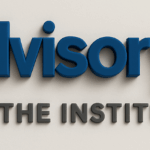Efficiency has long been considered a primary goal of good management. We continually search for better ways to wring the most value for the time, money, and effort spent. However, this quest presents a very real dilemma to managers in the digital age.
The drive for efficiency has its roots at least as far back to the early 1900s with Frederick W. Taylor1, one of the world’s first management consultants and recognized as the father of scientific management. From his work came the principle behind “best practices.” He believed in replacing rule-of-thumb work habits with precise procedures based upon a scientific study of the facts. You certainly can’t argue with Taylor’s results! His work at a paper mill dropped the cost of raw material by over 50% while simultaneously reducing labor costs by almost 75%. At a ball bearing factory, he increased the quality and quantity of output while also overseeing a 70% reduction in the number of employees. He raised worker output at a pig iron factory from 12.5 tons to 75 tons per day while also cutting the work force by 77%.2
Taylor strongly pushed the separation between labor and management. He believed managers should maintain total control by supplying the brains while their employees provided the brawn. He saw no need for workers to understand how or why things worked and chided managers who wanted to train their staff as being wasteful. Taylor even told workers, “I have you for your strength and mechanical ability. We have other men paid for thinking.”3
While such a statement would surely not be acceptable in most companies today, we must admit that this foundation is inherent in current managerial approaches and organizational structures. Planning is primarily a management function – often without significant input from the rank and file. Strong management controls are implemented in pursuit of increased efficiency. This worked well in the past because our world has been so predictable. You knew your competitors and it was difficult for them to truly surprise you. And even if they did, it never took long for you to catch up. Things were methodical, and the pace of change was linear.
It’s not hard to realize that we live in a very different world today. Change is accelerating rapidly. Barriers to entry in many industries are lower than ever before. New competition can arise from anywhere across the globe – even from sources that did not exist just a short time ago. Customers are in control, and their expectations are mushrooming.
Success today requires companies to operate at the speed of a ballistic missile with the agility of a ballerina. No longer can they afford the time it takes to run a decision up and down the chain of command. No more can burdensome controls be allowed to throttle the abilities of those closest to the issue. No longer can they allow the innovation, creativity, and passion of their staff to be squelched. No more can they live with an employee base in which the vast majority are not engaged.4
Think about it for a moment. The drive for efficiency is fundamentally about trying to increase business value. While some controls are needed for sustainability of the business and safety of its employees, most are aimed toward achieving efficiency. But this very quest is choking the ability of too many companies to achieve the speed and agility required for success in today’s rapidly changing world.
So how should companies respond?
- Ensure everyone knows the company’s bigger purpose. EY states, “More and more business leaders today are discovering that why their organization exists is a key to success in business.” They go on to say, “Mounting evidence suggests that a growing number of employees, customers, investors and governments care almost as much about a company’s motivations as its actions.”5 Purpose establishes a guiding light for every action within the organization – from strategy to daily decisions.
- Establish and communicate the end goal and set up accountability metrics. Eliminate all controls that are not critically necessary, and allow your team to use their creativity to achieve the established goals. After all, it’s the goal that matters – not that everyone is always doing everything the same.
- Eradicate bureaucratic decision-making that slows things down. Excess management is estimated to cost U.S. companies $3 trillion/year – that’s 17% of GDP.6 Talk about a trust tax! This is a price companies can no longer afford. They must trust their people, and in doing so, they will be amazed at the results. “There is a significant, direct, measurable,
and indisputable connection between high trust, high speed, low cost, and increased value.”7 Push decisions down to the lowest level possible. Large corporations, for example, should offer operating units their their buying power and customer base rather than forcing them to capitulate to headquarters control. Liberate them and then hold them accountable to achieve the agreed-upon goals in the manner most suitable for their environment. Again, it’s the goal that matters. - Focus on establishing a culture based upon speed, agility, customer obsession, innovation, data-evidenced decisions, and taking educated risks. Embrace failure as a learning opportunity, and help each individual become his or her best.
The volatility, uncertainty, complexity, and ambiguity of today’s world have rendered many historic management practices obsolete. Jim Clifton, CEO and Chairman of Gallup declares “The very practice of management no longer works.”8 Graham Waller, research vice president at Gartner adds that the accelerating changes in business today are disrupting tried-and-true management behaviors. 9 This isn’t just affecting the actions of individual managers but the structure and practices of the entire organization.
Time is of the essence. Get moving….NOW!
Sources:
1 “Frederick Winslow Taylor.” Wikipedia. Wikimedia Foundation, 02 Apr. 2017. Web. 01 Apr. 2017. https://en.wikipedia.org/wiki/Frederick_Winslow_Taylor
2 Team of Teams: New Rules of Engagement for a Complex World McChrystal, General Stanley, Tantum Collins, David Silverman, and Chris Fusssell. “Robot Check.” Robot Check. McGraw-Hill, n.d. Web. 01 Apr. 2017. https://www.amazon.com/Team-Teams-Rules-Engagement-Complex/dp/1591847486/
3 Ibid, Team of Teams: New Rules of Engagement for a Complex World McChrystal, General Stanley, Tantum Collins, David Silverman, and Chris Fusssell. “Robot Check.” Robot Check. McGraw-Hill, n.d. Web. 01 Apr. 2017. https://www.amazon.com/Team-Teams-Rules-Engagement-Complex/dp/1591847486/
4 Gallup, Inc. “The Engaged Workplace.” Gallup.com. N.p., 07 Jan. 2016. Web. 01 Apr. 2017. http://www.gallup.com/services/190118/engaged-workplace.aspx
5 Valerie Keller, Valerie. “The State of the Debate on Purpose in Business.” (n.d.): n. pag. EY Beacon Institute. EYGM Limited. Web. 1 Apr. 2017. http://www.ey.com/Publication/vwLUAssets/ey-the-state-of-the-debate-on-purpose-in-business/$FILE/ey-the-state-of-the-debate-on-purpose-in-business.pdf
6 Zanini, Gary HamelMichele. “Excess Management Is Costing the U.S. $3 Trillion Per Year.” Harvard Business Review. N.p., 06 Sept. 2016. Web. 04 Apr. 2017. https://hbr.org/2016/09/excess-management-is-costing-the-us-3-trillion-per-year
7 Covey, Stephen M. R. The Speed of Trust: The One Thing That Changes Everything. N.p.: Simon & Schuster, 2014. Print. https://www.amazon.com/dp/B000MGATWG/
8 Gallup, Inc. “State of the American Workplace.” Gallup.com. N.p., n.d. Web. 01 Apr. 2017. https://www.gallup.com/workplace/238085/state-american-workplace-report-2017.aspx
9 Levy, Heather Pemberton. “Remake Yourself With Six Digital Leadership Personas.” Smarter With Gartner. N.p., 27 June 2016. Web. 011 Apr. 2017. http://www.gartner.com/smarterwithgartner/digital_leadership_personas/
About the Author:





